-
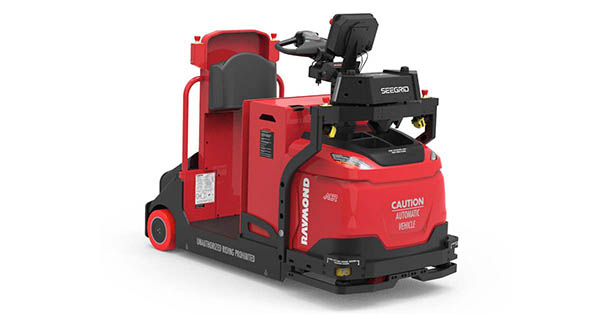
Charleston Autonomous Guided Vehicles (AGVs)
Carolina Handling sells, installs and maintains Autonomous Guided Vehicles (AGVs) and other AS/RS equipment in South Carolina and across the Southeast. Our automation specialists can help you find the perfect solution from world class AS/RS manufacturers like Modula.
South Carolina Autonomous Guided Vehicle Supplier
What is an AGV?
Sometimes described as self-guided vehicles or autonomous guided vehicles, automated guided vehicles (AGVs) are material handling systems or goods carriers that proceed autonomously across the floors of a warehouse, factory or DC without an onboard worker.
What are Automated Guided Vehicles used for?
Popular AGV applications include storage and retrieval in storage facilities and DCs, normally in support of order picking. They are additionally put to use for transportation of basic materials, work-in-process and finished products in factories.
What are some of the primary benefits of Self-Guided Vehicles?
- Decreased Labor Costs: AGVs can substantially lower labor expenses. A one-time expense can remove the ongoing expenses of wages, taxes and benefits related to a full-time worker.
- Increased Safety: Modern AGVs utilize sophisticated cameras, lasers or other sensing units that allow them to "see" and react to their surroundings very quickly. Humans can become tired or distracted, whereas self-guided vehicles do not. AGVs can also be utilized in extreme conditions or around dangerous materials where personal security is jeopardized.
- Increased Productivity & Accuracy: AGVs can work continuously, never needing breaks or getting fatigued. They can make long treks across a warehouse effortlessly. They also don't make the types of errors that people are prone to making.
- Modularity: Most AGV systems can be introduced gradually, replacing a handful of workers here and there without an enormous capital outlay up front. As automation needs increase, more AGVs can easily be added to the facility.
How do AGVs work?
AGVs are directed by a mix of sensor-based supervision systems and software. They can maneuver securely through a warehouse or manufacturing facility by using impediment detection bumpers and following carefully defined courses while utilizing precisely regulated acceleration and deceleration.
AGV navigation is usually supervised by one of these categories of systems:
- Vision guidance: Cameras capture the AGV's surroundings, and the vehicles utilize these recorded videos to get around. Vision guidance is standalone, meaning no adjustment is needed to a warehouse or factory infrastructure for this type of navigation.
- Laser target navigation: With laser-based equipment, reflective tape is affixed to pallet racks, walls, posts and other stationary items. AGVs utilize laser transmitters to bounce light off of these reflectors and then use the distance and angle of objects to maneuver.
- LiDAR: LiDAR solutions transmit laser bursts to determine the distance around the AGV and items in its environment. This data is utilized to establish a 360-degree map of the environment. In similarity to vision guidance, no modification of a facility is required.
- Inertial navigation: Transponders embedded into a building's flooring route AGVs along a defined track.
- Wired navigation: These systems utilize wire paths embedded into a warehouse or factory floor. The wire sends a signal that an AGV recognizes via a sensor or antenna system.
- Magnetic guide tape: This type of AGV employs magnetic sensing units and follows a route laid out by magnetic tape.
What are the various kinds of Autonomous Guided Vehicles?
There are several kinds of automated guided vehicles. Many AGVs resemble other human-operated vehicles yet are designed to operate without direct human intervention or guidance.
- Forklift AGVs: Forklift automatic guided vehicles are a commonly used kind of AGV in warehouses. They're engineered to transfer pallets without the need for a human operator.
- Automated Guided Carts: An automatic guided cart is the most fundamental type of AGV. They can transport all kinds of products from pallets to small components. AGCs are frequently utilized in stocking, sorting and cross-docking applications.
- Tugger AGVs: Towing or "tugger" AGVs tug non-powered, payload-carrying carts behind them in a train-like configuration. These types of automated guided vehicles are frequently utilized for moving heavy loads over long spans. Sometimes they are configured to make several stops along their route.
- Unit Load Handlers: Unit load handlers carry singular payloads like specific items or a discrete pallet or tote.
- Heavy Burden Carriers: These are utilized for exceptionally heavy weights like coils, plates or castings.
Automated Guided Vehicle Supplier Near Me
If you'd like a complete analysis of AGV possibilities for your warehouse, DC or manufacturing facility, you can speak with a professional at Carolina Handling.
-
-
Proudly serving
Charleston, North Charleston,
Mount Pleasant, Summerville,
Goose Creek, Bluffton,
Hilton Head, Beaufort, Port Royal,
Orangeburg, Santee, Manning,
Sumter, Columbia, Lexington,
Myrtle Beach, Florence, Manning,
Hampton, Walterboro,
and the entire State of South Carolina.
You May Also Like:
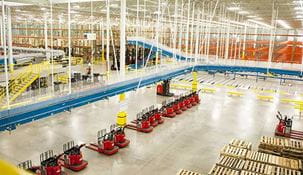
Automation
Carolina Handling can help you automate every aspect of your warehouse operation to increase efficiency.
Learn More
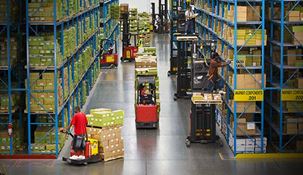
Optimization
Optimize everything in your warehouse to improve productivity and reduce operating costs.
Learn More
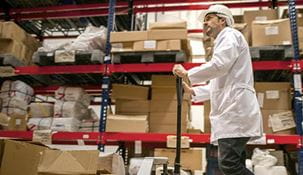
Warehouse Products
Looking for the right product for your operation? We have everything you need to do business in stock.
Learn More
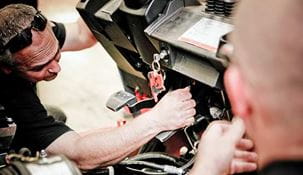
Service Maintenance
Providing superior lift truck service and maintenance for our customers is Carolina Handling's highest priority.
Learn More


